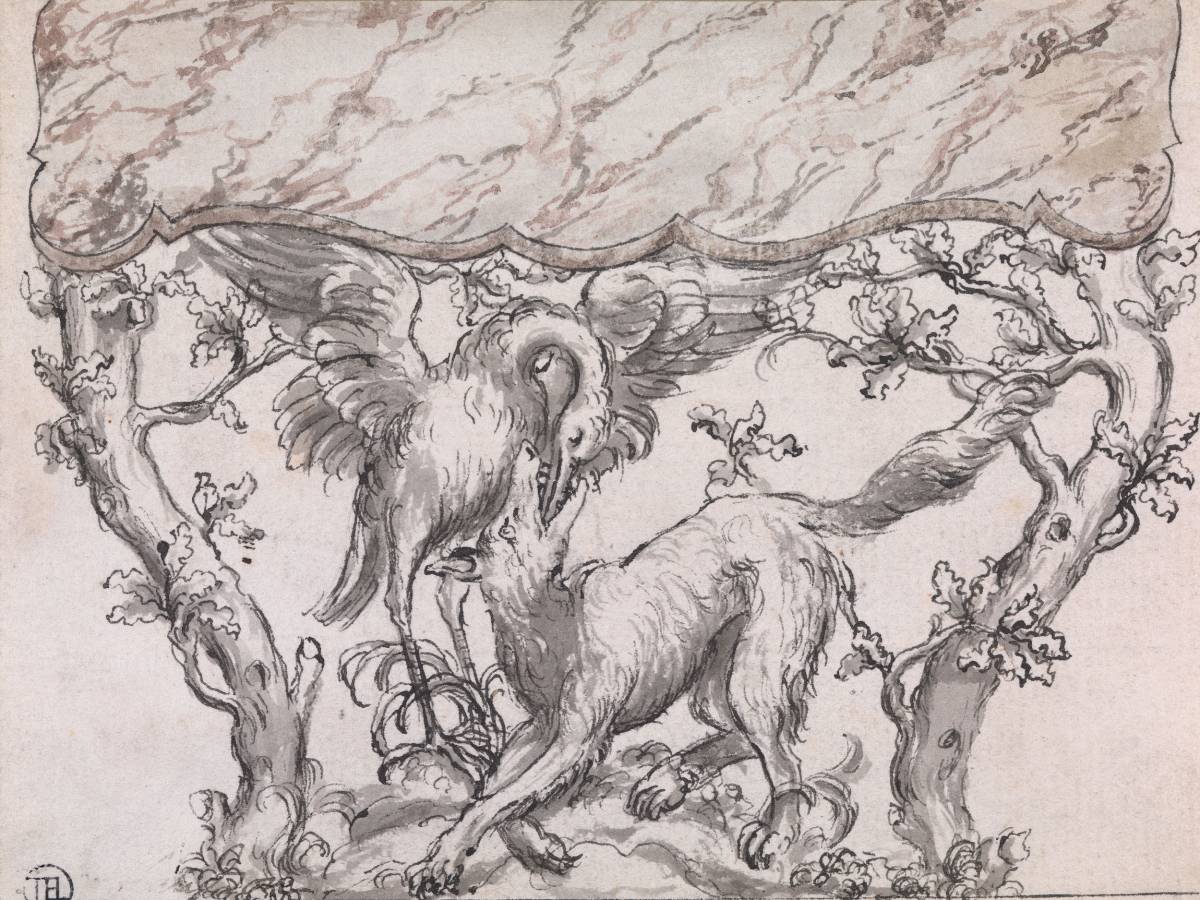This is a rare drawing by 'one of the most influential English designers of the eighteenth century.'[1] In 1737 Johnson was apprenticed to his cousin, a carver called Robert Johnson whom he described as 'the worst carver I ever knew.'[2] In the mid-1740s Johnson learned to draw under Matthias Lock, who in the words of Johnson's autobiography, was 'reputed to be the best Ornament draughts-man in Europe.'[3]
After a decade working in Liverpool and Dublin, Johnson returned to London where, with his book of Twelve Girandoles (1755), he launched a career as a designer of exuberant rococo ornament. Following the success of these designs, he was encouraged to publish 'a larger work, of furniture in general' and the leading frame maker Thomas Vialls employed him to 'make all his drawings' which he did for more than two decades, until 1777.[4]
Johnson provided designs across the breadth of fashionable styles and he was skilled at adapting to changing tastes. The leading furniture workshops could not rely on engraved designs as they were not exclusive and became dated very rapidly; carvers like Johnson provided unique designs, such as the example here in what was known as the 'rural' or rustic taste. Matthias Lock was an innovator of this style in the early 1750s which was taken up by Johnson in his 1758 collection of designs, re-issued as One Hundred and Fifty New Designs (1761).[5] Aesop's Fables were a popular source for mid-century rococo furniture. The fable of the crane and the wolf appears on a chimneypiece tablet at Blickling Hall, Norfolk, on plates from Chelsea and Staffordshire and on embroidered chair coverings.[6]
This drawing was previously in the collection of Thomas E Lowinsky, a collector of drawings and a distinguished artist in his own right, most of whose collection was sold en bloc to the Yale Center for British Art.
References
- Jacob Simon, ‘Thomas Johnson's 'The Life of the Author', Furniture History, 2003, vol 39, p.1.
- Jacob Simon, ‘Thomas Johnson's 'The Life of the Author', Furniture History, 2003, vol 39, p.34.
- Jacob Simon, ‘Thomas Johnson's 'The Life of the Author', Furniture History, 2003, vol 39, p.36.
- Jacob Simon, ‘Thomas Johnson's 'The Life of the Author', Furniture History, 2003, vol 39, p.51.
- Morrison Heckscher, 'Eighteenth-Century Rustic Furniture Designs', in Furniture History, 1975, vol 11, p.59.
- National Trust, museum no.NT 355692; Victoria and Albert Museum, museum no’s.414:920/E-1885, 414:384/A-1885 and W.14-1938.


